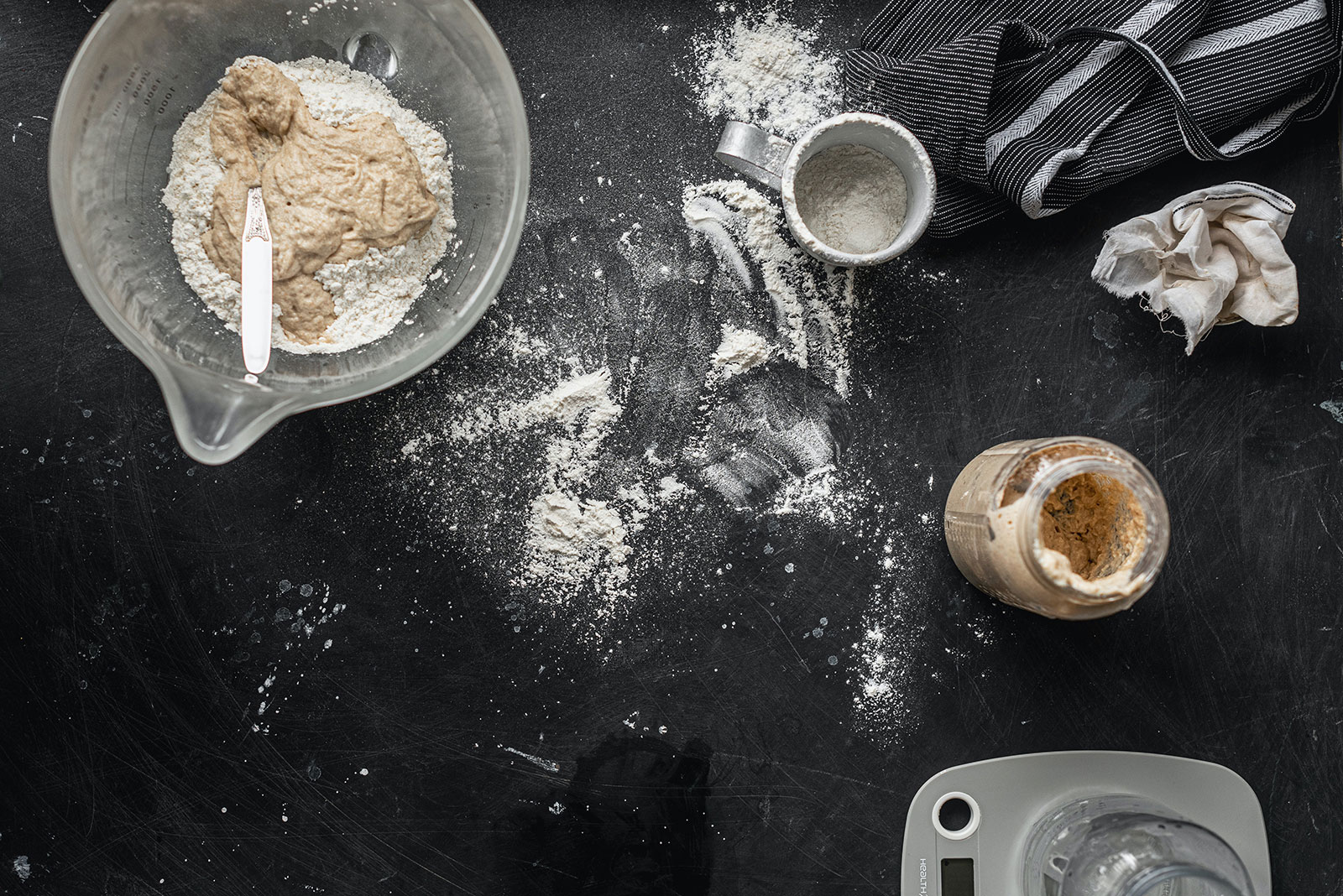Liene Geidane via Unsplash
Home baked sourdough has taken the world by storm this year as a result of the coronavirus pandemic, giving cooking-lovers, amateur bakers and everyday people living in quarantine the opportunity to take on a new hobby and rise to the challenge of baking their own bread.
Now, in celebration of “Sourdough September,” a month devoted to the craft of baking sourdough and the passionate individuals who make it, we want to share some of our favorite insights and tips about this frequently homemade, low-waste marvel.
History Rooted in Zero Waste
Over 6,000 years ago, an Egyptian baker discovered that he had left a water and flour mixture to sit accidentally for multiple days. Though its odor and bubbles were a sign of it spoiling at the time, he still put it in the oven to avoid wasting it. What came out of it? A baking space wafting with a mouth-watering aroma, and chewier bread with a formidable crust.
The bread loaf quickly spread in popularity, allowing bakers to use the ingredients they would have otherwise thrown away to produce a valuable baked good. For this reason, this type of sourdough bread has risen to become even more environmentally friendly and low waste.
Homemade sourdough bread requires a starter—a naturally fermenting mixture of flour and water—that can be kept for generations to come. “Feeding” a starter with flour and water is necessary, but can be highly sustainable by using leftover flour from a recipe or even utilizing soon-to-expire flour to reduce waste of your baking ingredients. Sourdough starter can even be leveraged to make a variety of unique baked goods, so you can embrace zero waste while exploring new tastes!
Saying Yes to Natural Yeast
For home bakers and large bakeries alike, the use of dry instant yeast when baking bread is common. Manufactured instant yeasts excel at adding carbon dioxide to doughs and in scaling baked good production, but are often criticized by baking purists for being overengineered. Instant yeasts begin manufacture in sterile labs, before being nourished and modified chemically to create a budding culture. Tons of yeast can be made from a small culture in just a few days, before being processed into its dry form and then sold at scale to become the highly effective yeast found in supermarkets, or used in factory breadmaking.
As large scale bread factories quickly produce bread with this manufactured yeast, they sometimes lose sight of the artisanal and environmentally friendly aspect of breadmaking. Even though using dry yeast may be quick and convenient, creating natural yeast right in your kitchen is easy and fast to do.
Wild yeast exists all around us. As a microorganism in the fungi family, yeast is found practically everywhere, from the surfaces of vegetables to our soils and floating through the air at all times. This makes it entirely possible to begin your sourdough journey just by using the air around you to capture wild yeast. Every part of the country has different strains of natural yeast which makes for slight differences in a sourdough loaf baked in Nebraska than one in Connecticut.
However, there are ways to customize your sourdough by focusing on different types of natural yeast. Look around your kitchen now and keep an eye out for dried or fresh fruit that may be spoiling shortly. That fruit—and the yeast that calls that fruit home—can be the perfect addition to your sourdough starter! As biologist Sudeep Agarwala explains, that fruit can help yield a fruity, fermented and fully natural yeast sourdough starter.
Creating your own yeast at home may likely be easier than throwing away dry instant yeast, which spoils quickly. And, when the bread or pastry comes out of the oven, the aroma of a no guilt baking process will fill you with excitement to continue the low-waste journey.

Don’t Toss the Discard
Even though sourdough can be exceptionally low-waste through using leftover or spoiling flour, there is one big challenge in making sure your homemade bread journey stays that way: the discard. With waste inherent in its name, “discard” is the portion of sourdough starter that is removed during feedings to keep starters more manageable and the natural yeast and bacteria reproducing in a healthy manner.
But even though we refer to it as “discard” and some methods recommend throwing it out, there are plenty of ways to make use of it.
Many bakers have developed recipes to use their prized discard rather than dump it. Sourdough starter contains powerful fermented flavor and healthy bacteria to aerate foods and enrich baked goods. A quite popular recipe introduced with the discard recipe trend is sourdough pancakes, where tang and customization with chives or seasoning can spice up the usual breakfast food. Spoiling bananas can be repurposed to create caramel-flavored banana bread when combined with a sourdough starter. For sweet tooths, bakers have looked towards sourdough brownie recipes, uniquely making the brownies fudgier and rich. Food Print offers even more great ideas for using your discard, though you can also find dozens of recipes with a simple internet search.
Celebrate Sourdough September
As Sourdough September continues on, there are plenty of opportunities to start your own sourdough adventure or support those that make it. The Real Bread Campaign has created multiple guides to begin your own starter, with timelines for feedings and tips on how to make the bread. With a little bit of time and passion, you too can start a low-waste cooking journey with sourdough.
Have a favorite sourdough recipe or pictures from your sourdough journey? Share them with us on Instagram or Twitter!
